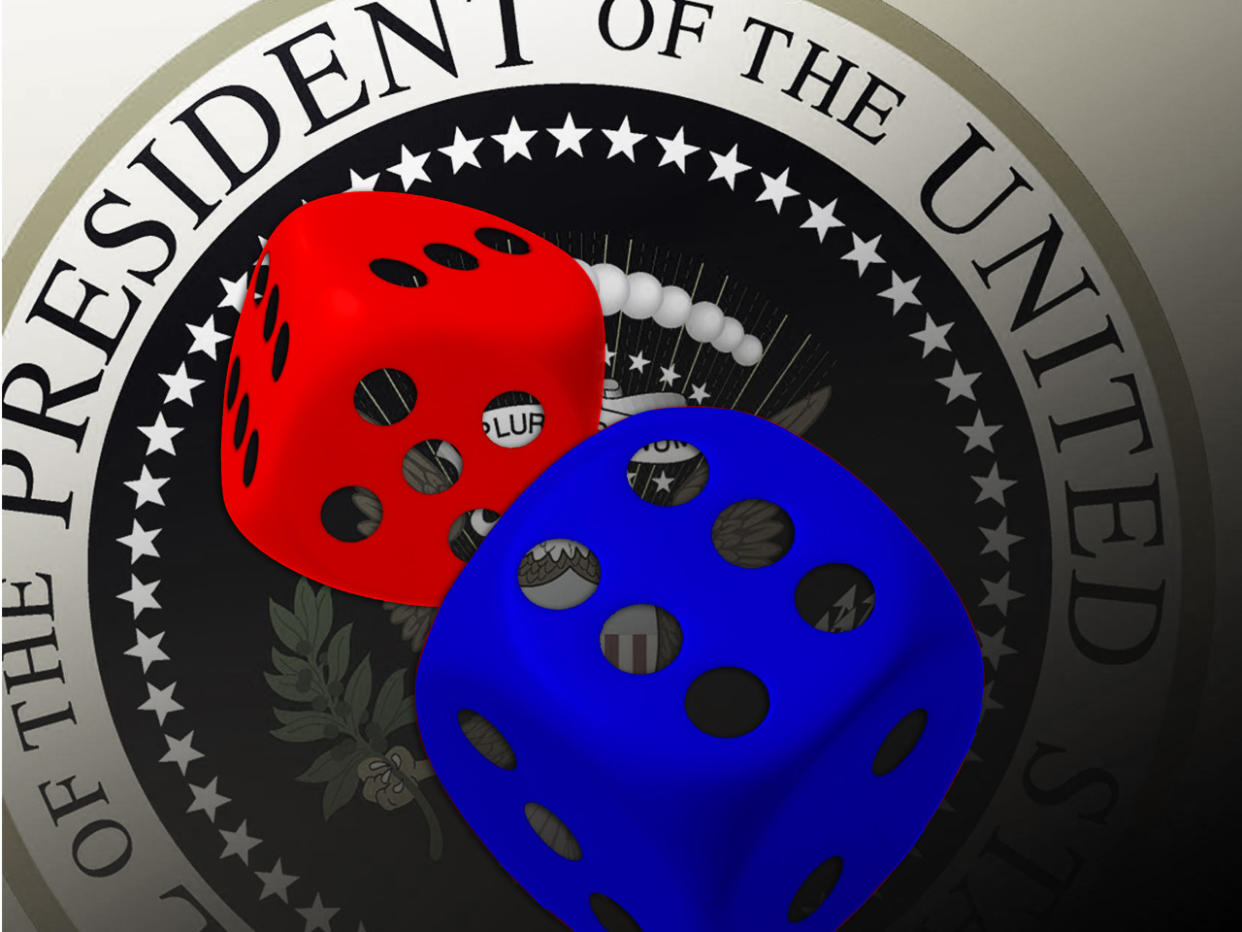Nobody has any idea what’s going to happen in the Nevada caucuses. Here’s why.

Photo illustration: Yahoo News; photos: Getty Images, AP
LAS VEGAS — There are two ways to win a presidential nominating contest, as every student of American politics knows. The first is fairly straightforward: by winning the most votes. That is how Donald Trump, for example, triumphed last week in New Hampshire.
The second way is less, shall we say, scientific. If the media expects you to perform at a certain level, and then, on primary or caucus day, you perform better, you are said to have won the so-called expectations game.
It’s hard to pinpoint where these “expectations” come from or how, exactly, they form, but the biggest factor, by far, is public opinion polling. That’s why Marco Rubio was considered one of the winners of the Iowa caucuses earlier this month: He was polling at about 17 percent before caucusing began but wound up nearly stealing second place from Trump with 23 percent of the vote.
What happens, however, when there is no reliable polling to go on? How is the media supposed to figure out who — other than the numerical winner, of course — has emerged victorious on primary or caucus night?
We’re about to find out. In Nevada — where the Democratic caucuses take place on Saturday and the Republican caucuses follow next Tuesday — no one has any idea what to expect. So far, only two Republican and three Democratic polls of Nevada voters have been released since the start of 2016, and observers aren’t putting a whole lot of stock in them.
Why? Because it’s very, very challenging — if not impossible — to produce a reliable caucus poll here.
“It’s a total mystery what’s going to happen,” Lt. Gov. Mark Hutchison, a Rubio supporter, told Yahoo News. “The people who do this for a living are saying, ‘Who knows?’”
Another case in point: 2008. In that year’s final Republican polling average, Mitt Romney led John McCain 25.7 percent to 20.7 percent; Ron Paul was polling at 7.3. But in the actual caucuses, Romney won 51.1 percent of the vote, McCain got 12.7 percent and Paul got 13.7 percent. The polling was way, way off.
The same thing happened on the Democratic side. In the final average, Hillary Clinton was four percentage points ahead of Barack Obama: 37.8 percent to 33.8 percent. John Edwards trailed with 18 percent. The actual caucus results, however, were wildly different: 50.7 percent for Clinton, 45.2 percent for Obama, 3.8 percent for Edwards.
To be fair, caucuses are always harder to poll than primaries; fewer people participate because the process tends to be more convoluted and time-consuming. But there are several reasons why the Nevada caucuses are particularly difficult to get a good read on.
A poll is only as good as the mix of voters it represents. The closer a pollster comes to nailing the demographic makeup of the electorate — women, young people, Latinos and so on — the more accurate his or her horserace numbers are likely to be.
In Nevada, that mix is hard to get right.
For one thing, the Nevada caucuses are a fairly new phenomenon. They were first held in 2008. That’s not a lot of history to go on. Iowans have been caucusing for generations; Nevadans, not so much. When you’re trying to identify likely caucus-goers, the first people you look for are people who have caucused before. In Nevada, there aren’t many of them. The total GOP turnout in 2012? Just 33,000 people.
Nevadans are also highly transient. They’re constantly coming and going. Needless to say, that makes it difficult to interview them; it also makes it difficult to figure out how likely they are to participate in the caucuses, because they haven’t necessarily lived in the state long enough to establish any real voting patterns.
Then there are the odd hours Nevadans work, especially in the major population centers like Las Vegas and Reno. Casinos are open all night. So are many restaurants. Pollsters who call during the day will miss the nine-to-five workers; pollsters who call later will miss the folks on the night shift. It’s too expensive for most pollsters to conduct polls both day and night.
Finally, Nevada’s fast-growing minority population is a factor as well. It’s mostly Latino. It skews younger. And younger Latinos tend to use cellphones, which makes them — you guessed it — harder (and more expensive) to reach. As a result, the people who respond to Democratic surveys may be older and whiter than the people who actually show up on caucus day.
On the Democratic side, the latest polls — all three of them — show Clinton leading Sanders by an average of 2.4 percentage points; on the Republican side, Trump is leading with 42 percent of the vote, and Rubio and Ted Cruz are basically tied for second with 19 percent and 20 percent, respectively.
But don’t expect the actual results to resemble those numbers. None of the experts here do. Whatever happens in the caucuses — both Democratic and Republican — will be something of a surprise.
Nevada prides itself on being “First in the West.” It’s certainly going to be wild.


